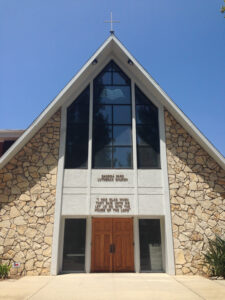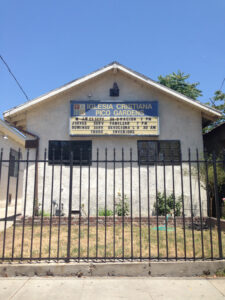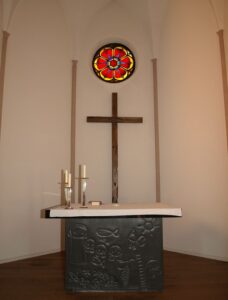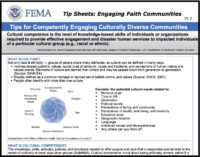In this tip sheet, you will discover foundational information to help you interact with Protestant Christian leaders. It is part of a set of tools and training for FEMA to help disaster response professionals engage with faith communities. Much of the information also can help students, researchers, government agencies, non-profits and businesses learn about and develop relationships with communities. Click here for the PDF version for this tip sheet.
Religion Called: Protestantism (or denominational name such as Methodism)
Adherents Consider Themselves: Christian and are called Christians (or denomination’s name, e.g. Baptists)
House of Worship: Church
First Point of Contact: Pastor and governing committee (parish council/elders/vestry)
Religious Leader: Minister/pastor/priest
Spoken Direct Address: Use “Reverend,” “Pastor,” or “Father” depending on denomination
Physical Interaction: Handshake generally O.K. across genders
HOUSE OF WORSHIP
 Many Protestants call their worship site a “church.” Some call it a meetinghouse; a few call it a cathedral (but may not use it in the same way as Catholics and Anglicans do). It is common for church buildings to have a steeple topped with a cross. Some Protestants meet in borrowed space (e.g. a school auditorium) or use a commercial space. Congregations can be small storefront churches or large-scale campuses with multiple buildings.
Many Protestants call their worship site a “church.” Some call it a meetinghouse; a few call it a cathedral (but may not use it in the same way as Catholics and Anglicans do). It is common for church buildings to have a steeple topped with a cross. Some Protestants meet in borrowed space (e.g. a school auditorium) or use a commercial space. Congregations can be small storefront churches or large-scale campuses with multiple buildings.
RELIGIOUS LEADERS
 Ordained/Commissioned/Licensed Leaders
Ordained/Commissioned/Licensed Leaders
- Common terms for Protestant leaders include: minister, pastor, priest (Anglican/Episcopal tradition), deacon, elder, bishop.
- In some traditions, deacons are clergy; in others, it is a temporary elected office.
- Women may be clergy in some Protestant denominations.
- Some Protestant denominations have no gender qualifications for leadership roles or participation in worship. A few limit leadership roles to men.
Lay Leaders
- Includes lay governing bodies such as a parish council, elders, or vestry.
POINTS OF CONTACT
- Local: Local congregations are usually led by a pastor. Many local congregations (even those of denominations with a robust regional or national governing structure) are self-governing. Often, local governance is in the hands of an elected committee (e.g. a parish council, elders, or vestry). First point of contact at local level should be both pastor and governing committee.
- Regional: Varies by denomination (usually a Bishop or judicatory body).
- National: Varies by denomination (usually a national judicatory body).
NVOAD MEMBERSHIP AND CORE CAPABILITIES IN DISASTER
National Voluntary Organizations Active in Disaster (NVOAD) is a nonprofit, nonpartisan, membership based organization that serves as the forum where organizations share knowledge and resources throughout the disaster cycle. FEMA DSA team members should check with their VAL to determine whether local or regional VOADs exist in their operational area. National VOAD members include:
ACTS World Relief, Adventist Community Services/Adventist Disaster Response, Billy Graham Rapid Response Team, Brethren Disaster Ministries/Children Disaster Services, Church World Service, Convoy of Hope, Cooperative Baptist Fellowship, Episcopal Relief and Development, Feed the Children, HOPE Worldwide, Lutheran Disaster Response, Mennonite Disaster Services, National Baptist Convention U.S.A., Nazarene Disaster Response, Operation Blessing, Presbyterian Church in America – Mission North America, Presbyterian Disaster Assistance, Samaritan’s Purse, Southern Baptist Convention Disaster Relief, The Salvation Army, United Church of Christ, United Methodist Committee on Relief, World Renew.
Each organization has distinct capabilities. Responders should check with an organization’s local affiliate or with its national office to confirm capacity and activities specific to each disaster situation.
Also consider whether megachurches (over 2000 members) are located in the affected area as they are likely to have social service programs. They may also have significant capabilities and/or disaster-related needs.
ETIQUETTE QUICK TIPS
Greeting
When introducing yourself to a religious leader, use formal religious titles unless instructed otherwise (Father, Pastor, Reverend).
Physical Interaction
Shaking hands is common in most Protestant denominations. In certain conservative denominations it may not be readily accepted for members of the opposite sex to shake hands or embrace.
Other
When entering a Protestant house of worship, shoes are generally left on but men should remove hats or caps. Other than this general practice, traditions around dress codes for both sanctuary spaces and office spaces vary dramatically according to culture and geographical region of the country. In general, there are no rules about what one may wear or not wear. However, in some protestant denominations, sometimes based on ethnicity or tradition, visitors would be expected to dress semi-formally for worship services. This is true for example in many black Protestant congregations.
For some protestant denominations, e.g. Anglican/Episcopal, the sanctity of certain space/objects is taken very seriously. Ask before touching objects in the church or entering certain areas. Also ask before participating in worship services. In sacramental Protestant churches, do not take communion, unless you are a baptized Christian and an invitation is offered. Ushers can help with customs, dress, and etiquette.
GOVERNANCE / JUDICATORY
Some Protestant churches are part of a hierarchical governing structure (e.g. the Evangelical Lutheran Church in America; Southern Baptist Convention; United Methodist Church); others are part of a loose federation; still others are completely freestanding and independent.
MEETING LOGISTICS AND SCHEDULING
Scheduling and Holidays
- Christmas: a celebration of the birth of Jesus as God incarnate.
- Holy Week: leads up to Easter; begins with Palm Sunday (recalling Jesus’ return to Jerusalem); includes Maundy Thursday (recalling Jesus’ institution of the practice of Holy Communion during his last meal with his disciples) and Good Friday (recalling Jesus’ crucifixion).
- Easter Season: the most important season in the Christian year celebrating the resurrection of Jesus from the dead.
- Pentecost: commemorating the receipt of the Holy Spirit by the nascent Christian community, fifty days after Jesus’ Resurrection. This holiday is recognized by many and is a major celebration for some.
- All Protestants follow the same liturgical calendar, with varying levels of observance for the seasons of Advent and Lent.
- Some congregations celebrate “Homecoming” (in late summer, usually).
- Some Protestants also observe other days related to their denominational history.
- Thanksgiving Day (a U.S. national holiday) is celebrated as a religious holiday by some Protestant churches.
Food
Few general restrictions or requirements; check with individual leaders. Some denominations do take very seriously laws of fasting and abstinence, refraining from eating meat on certain days and limiting the quantity of food on other days. During the season of Lent, some denominations abstain from eating meat on Fridays, but are permitted to eat fish.
Logistics
Avoid meetings on Sundays as it is the Sabbath for most Protestants. Some denominations may schedule a full day of activities on this day. Seventh Day Adventists observe the Sabbath on Saturdays. Be aware that many Protestant religious leaders take Monday as their day off.
DRESS
- Some leaders wear a special black or colored “clerical” shirt with an affixed white clerical collar or white tab insert like those worn by Catholic or Orthodox priests; others dress in the same manner as their lay members.
- When conducing worship, some Protestant clergy wear elaborate robes similar to what is worn by Catholic priests during Mass; others wear a black academic robe; still others wear a business suit or more casual street clothing.
ABOUT PROTESTANTISM
As an umbrella term, Protestant Christianity covers an enormous diversity of denominations and sects. The list is long, and includes groups whose views and practices differ sharply with each other. Many Protestant churches are autonomous in their operation. Beliefs and practices can vary even within the same denomination. Meaningful generalization is difficult, but the following tenets are foundational and relatively consistent throughout denominations.
- Protestantism is characterized by the assertion of a personal relationship with God through Christ, study of the Bible by laypersons, freedom of conscience on many matters, and a wide variety in worship styles.
- Jesus is considered (by many) God Incarnate. The birth, ministry, death, and resurrection of Jesus are definitive.
- Protestants are Trinitarian in their understanding of the nature of God.
- The Holy Spirit is important to all Protestants, but receives more emphasis from some than from others.
Click here for the PDF version for this tip sheet.
The Engaging Faith Communities tip sheets were created through a collaboration between the DHS Center for Faith-based and Neighborhood Partnerships, the USC Center for Religion and Civic Culture, USC CREATE and the National Disaster Interfaiths Network. For further training, please see EMI course IS-505, which was also developed by this partnership.


